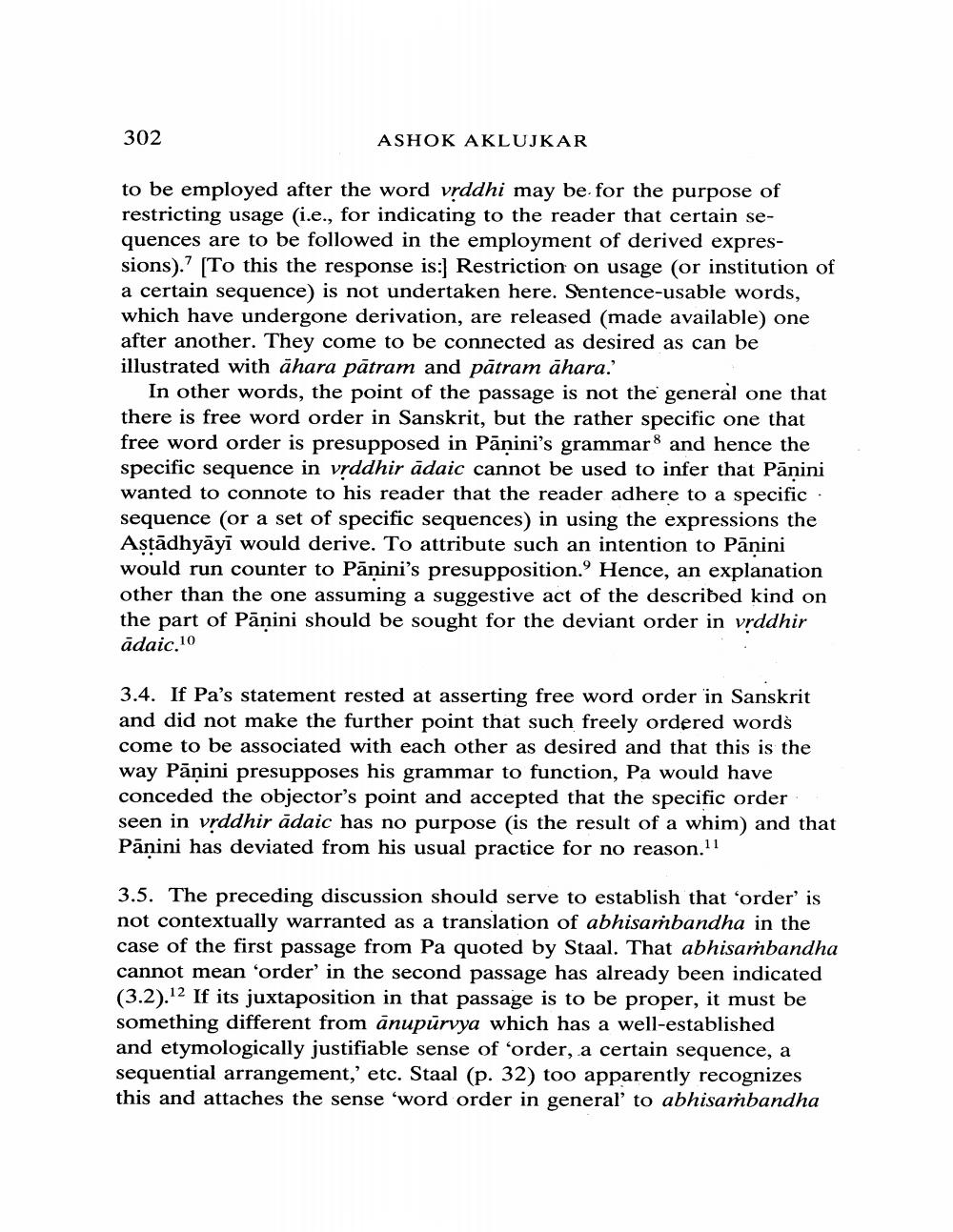________________
302
ASHOK AKLUJKAR
to be employed after the word vrddhi may be for the purpose of restricting usage i.e., for indicating to the reader that certain sequences are to be followed in the employment of derived expressions).? To this the response is: Restriction on usage (or institution of a certain sequence) is not undertaken here. Sentence-usable words, which have undergone derivation, are released (made available) one after another. They come to be connected as desired as can be illustrated with ähara pātram and pātram āhara.'
In other words, the point of the passage is not the general one that there is free word order in Sanskrit, but the rather specific one that free word order is presupposed in Panini's grammar and hence the specific sequence in vrddhir ādaic cannot be used to infer that Pānini wanted to connote to his reader that the reader adhere to a specific sequence (or a set of specific sequences) in using the expressions the Astādhyāyi would derive. To attribute such an intention to Panini would run counter to Panini's presupposition. Hence, an explanation other than the one assuming a suggestive act of the described kind on the part of Pānini should be sought for the deviant order in vrddhir ādaic.10
3.4. If Pa's statement rested at asserting free word order in Sanskrit and did not make the further point that such freely ordered words come to be associated with each other as desired and that this is the way Pāṇini presupposes his grammar to function, Pa would have conceded the objector's point and accepted that the specific order seen in vrddhir ādaic has no purpose is the result of a whim) and that Panini has deviated from his usual practice for no reason.11
3.5. The preceding discussion should serve to establish that 'order' is not contextually warranted as a translation of abhisambandha in the case of the first passage from Pa quoted by Staal. That abhisaṁbandha cannot mean 'order' in the second passage has already been indicated (3.2).12 If its juxtaposition in that passage is to be proper, it must be something different from anupūrvya which has a well-established and etymologically justifiable sense of 'order, a certain sequence, a sequential arrangement,' etc. Staal (p. 32) too apparently recognizes this and attaches the sense 'word order in general' to abhisambandha




